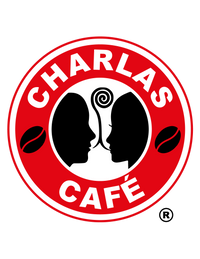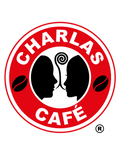The growing popularity of Cold Brew Coffee
In fact, specialty coffee has become a constant in the world of high-quality coffee. By 2025, the global whisky market is projected to grow by more than US$1 billion, representing a high compound annual growth rate of 26.44%.
The rapid rise in popularity of cold brew coffee has not been subject to teething problems, largely linked to concerns about food safety. For example, in August 2022, the US Food and Drug Administration banned 53 different beverages due to a threat of microbial contamination. Some of the cold brews were ready to drink from enthusiastic, high-quality roasters.
Despite being recognized as rare, food safety issues related to cold food cannot be ignored. This applies to all manufacturers, from large-scale operations to roasters and cafes offering cold food and beverages.
For more information about the use food and cold drinks. and food safety regulations, I spoke with Alessandro Colombo, coffee roaster, specialist in cold food and drinks. . Read on to find out more.

The growing popularity of Cold Brew Coffee
The rise of cold brew has been impossible to ignore in recent years. Many coffee shops around the world serve a variety of cold drinks all year round, including cold brew.
The Caffè Rinaldi shop is located in Rome, Italy. Alessandro says that although many people still enjoy traditional caffè frido in Italy, cold brew is becoming increasingly popular.
“When people come to our coffee shop and try cold brew, they usually come back for more,” he says. In Italy, customers are enjoying new ways to drink coffee, including the aromatic complexity of cold brew.
Randy Anderson is an American consultant who has been working with cold brew for over two decades. He says convenience is important for cold brew to grow.
“All consumers should open the refrigerator and take out a can, or dispense from a spout or container, and then add ice and water (if you're using a concentrate), and you've got a cold brew,” he notes.
Randy also explains that cold brew can be ordered online, which helps to further boost consumption. It can be kept in storage and stored in the refrigerator once opened.
“All consumers have begun to realize that cold brew is a really convenient and quality option to have at home,” he adds.

Different ways to prepare and serve Cold Brew Coffee
Nowadays, there are several innovative ways to prepare cold brew , either in small batches or larger commercial volumes.
Randy explains that a few years ago, most coffee shops extracted cold brew using a large plastic container. Ground coffee and water were added to the container and allowed to sit at room temperature, or below, for up to 24 hours.
Now, there are much more efficient and advanced ways of preparing cold brew . Some automated machines even take just a few minutes. Alessandro says that at Caffè Rinaldi they use a Dripster cold brewer, which includes an adjustable valve and a steel filter, making it easy to control the extraction. “This method takes about two and a half hours to prepare,” he says. cold brew “.
While the solutions of cold brew While small batch brewing is popular in coffee shops, Randy explains that larger manufacturers need to invest in much more extensive and efficient brewing systems to keep up with demand.
Commercial grade stainless steel refrigerated containers and brewers are often the best choice for large manufacturers. cold brew . This is because they are insulated, which helps to better regulate the brewing temperature.
Depending on the system used, these machines can prepare cold brew in just 30 minutes, with a total production of almost 400 liters per day.
It is not surprising, then, that trading systems cold brew can be expensive, meaning coffee and beverage companies need to carefully consider which machines work best for them.

How to Improve Safety Procedures for Cold Brew Coffee Preparation
Both Randy and Alessandro agree that incorrect brewing temperature and air exposure pose the biggest health and safety risks in cold brew production. Both Randy and Alessandro agree that incorrect brewing temperature and air exposure pose the biggest health and safety risks in cold brew production.
Alessandro says he uses fresh, cold water to prepare cold brew, but he doesn't use ice to regulate the brewing temperature.
Randy points out that any cold brew method that takes more than two hours should be stored in the refrigerator. A brewing temperature of between -1 and 5.5°C is recommended.
In order to prevent mold or bacteria growth, cold brew should be consumed within three weeks of preparation. Alternatively, it can be frozen in a container, with about 5% headspace to allow for expansion of the liquid.
Preparation procedures
Randy believes that the following preparation tips will help ensure strict health and food safety standards when drinking cold brew.
- The procedure consists of properly mixing the ground coffee and water in order to ensure the homogeneity of the beans.
- It is necessary to avoid excessively shaking the ground beans or squeezing them.
- Instead, gently massage the filter bag.
He explains that these steps will prevent an increase in turbidity, which is a measure of the level of particles in a liquid. As turbidity increases, the liquid becomes denser and less clear due to a higher concentration of light-blocking particles.
Likewise, following the previously established procedures means that the fine parts of the coffee containers are not disturbed. Excessive agitation of the finest particles can lead to over-extraction, generating unpleasant and astringent flavors.
Finally, Randy stresses that cold brew should always be stored in an airtight container. This way, exposure to oxygen, bacteria, and other physical or chemical contaminants is minimized.

Whether a coffee company is just starting to produce cold brew products or has chosen to expand its current operations, food safety for cold brew coffee is critical.
In some cases, this means adopting more formalized manufacturing processes, which may take some time to properly implement. An optimal goal is to follow standard food safety procedures and verify local health and safety regulations.
Credits: Loreta Moccia. Alejandra Soto has edited this translation.
Courtesy and credits: PDG Español.











Leave a comment